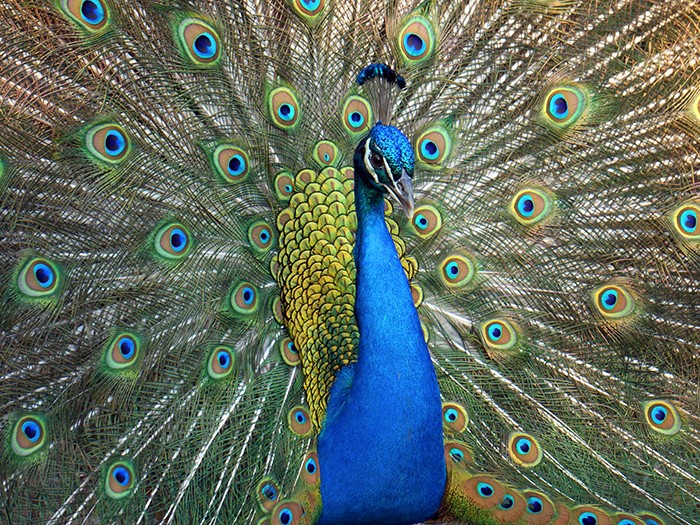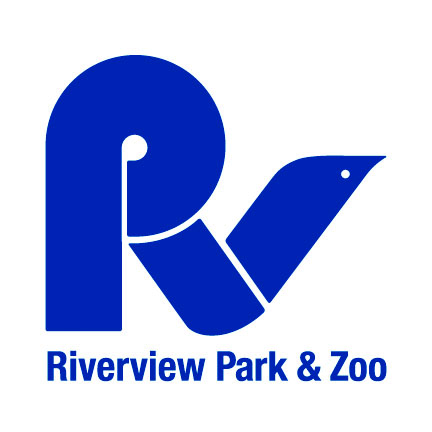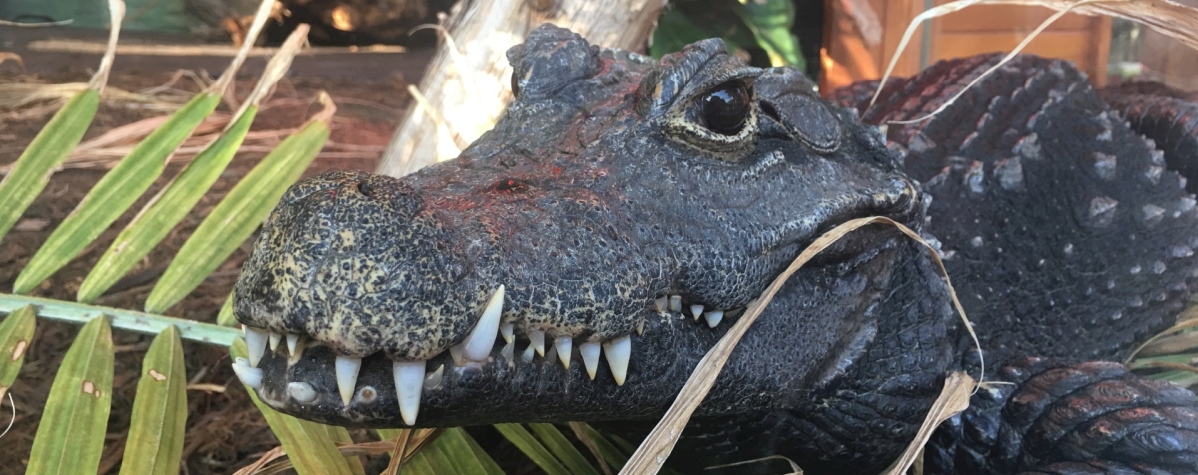Common Peafowl Peacock
Scientific Classification 
| Species |
Ara severus |
| Kingdom | Animalia |
| Phylum | Chordata |
| Class | Aves |
| Order | Galliformes |
| Family | Phasianidae |
| IUCN Status | Least Concern |
Appearance and lifespan
Males are large, with a long ornate tail used for courtship. They have a royal blue head, neck and breast, their facial skin is white, and they have a crest that is fan shaped. Immature males have varied plumage, but will have the fan-shaped crest and mottled blue upperparts. By the age of three, they reach full plumage and sexual maturity. The tail may continue to grow for another two to three years. Males will molt and lose their tail feathers each year in late summer. Females are dull in appearance compared to the males. Facial skin and crest shape are the same as the male, but the crest is brown. The throat is white, the breast and back of neck are green, the abdomen is pale buff to cream, and the rest of the body is light brownish-gray. Females do not have the large tail that the males have.
The length of this bird is about 2.2m (7.5 ft) with the tail being about 1.5m (5 ft) of the total length. Females are generally smaller than males. They weigh between 2.7 to 3.6 kg (6 to 8 lb).
The life span of the Common Peafowl is approximately 10 to 25 years.
Behavior and reproduction
Peafowl forage on the ground, usually in small groups and try to escape on foot through undergrowth and avoid flying when there is danger. They will fly up into tall trees to roost for the night. Peafowl are recognized by their loud calls especially in the breeding season. They may call at night when alarmed and neighboring birds may call back. Nearly seven different call variants have been identified in the peacocks apart from six alarm calls that are commonly produced by both sexes.
Peacocks are polygamous, and the breeding season is spread out but appears to be dependent on the rains. Females do not appear to favor specific males. When a male is displaying, females do not appear to show any interest and usually continue their foraging. During courtship, the males’ long ornate tail is fanned out and held erect, they quiver and shake their tail to impress the females.
The nest is a shallow scrape in the ground lined with leaves, sticks and other debris. Average clutch sizes for peafowl in the wild are 6 to 8 eggs. Captive birds will lay up to three clutches of 3 to 12 eggs per year. The eggs are light brown and are a little larger than a large chicken egg. The incubation period for the eggs is 28 days. The males do not help to raise the young. Peachicks resemble the female but have a mottled breast.
Ecology and habitat
Indian Peafowl are widely distributed in the wild across South Asia and protected both culturally in many areas and by law in India. Poaching of peacocks for their meat, feathers and accidental poisoning by feeding on pesticide treated seeds are known threats to wild birds.
Peafowl prefer varied deciduous forests, cultivated lands and being close to villages. They are very common in most areas of their natural range. Peafowl forage on the ground for food, they return to the same watering hole each day at dusk before roosting in a tree for the night. Their diet in the wild includes grains, insects, small reptiles, small mammals, berries, drupes, wild figs, and some cultivated crops.
Food at the Zoo
At Riverview, we feed our peafowl gamebird pellets, poultry grain, lettuce and carrot tops, oyster shell, insects and poultry grit.
Threats
Although peafowl were once common in Bangladesh, now they may be extinct in that country. Because of its appearance, this bird was taken worldwide as a showpiece. Early seafarers decided to bring the peafowl to their homelands in other parts of the western world. This method seems to have saved the bird from complete extinction.
Did you know?
- This is the National Bird of India.
- This species is sometimes simply called the Peacock; the peacock is the male; females are known as peahens and the young are peachicks.
- The train on the male is made of over 200 feathers.


